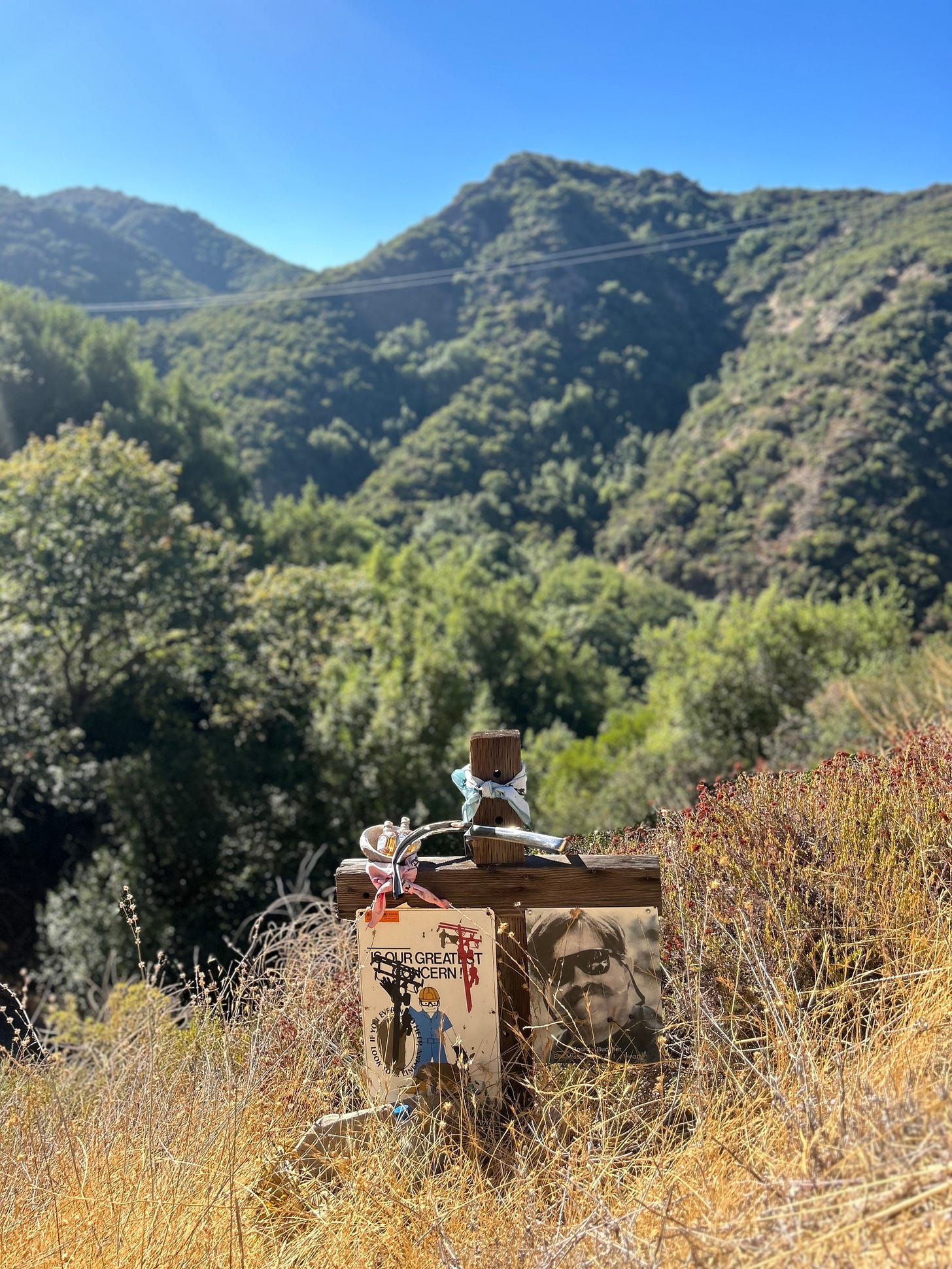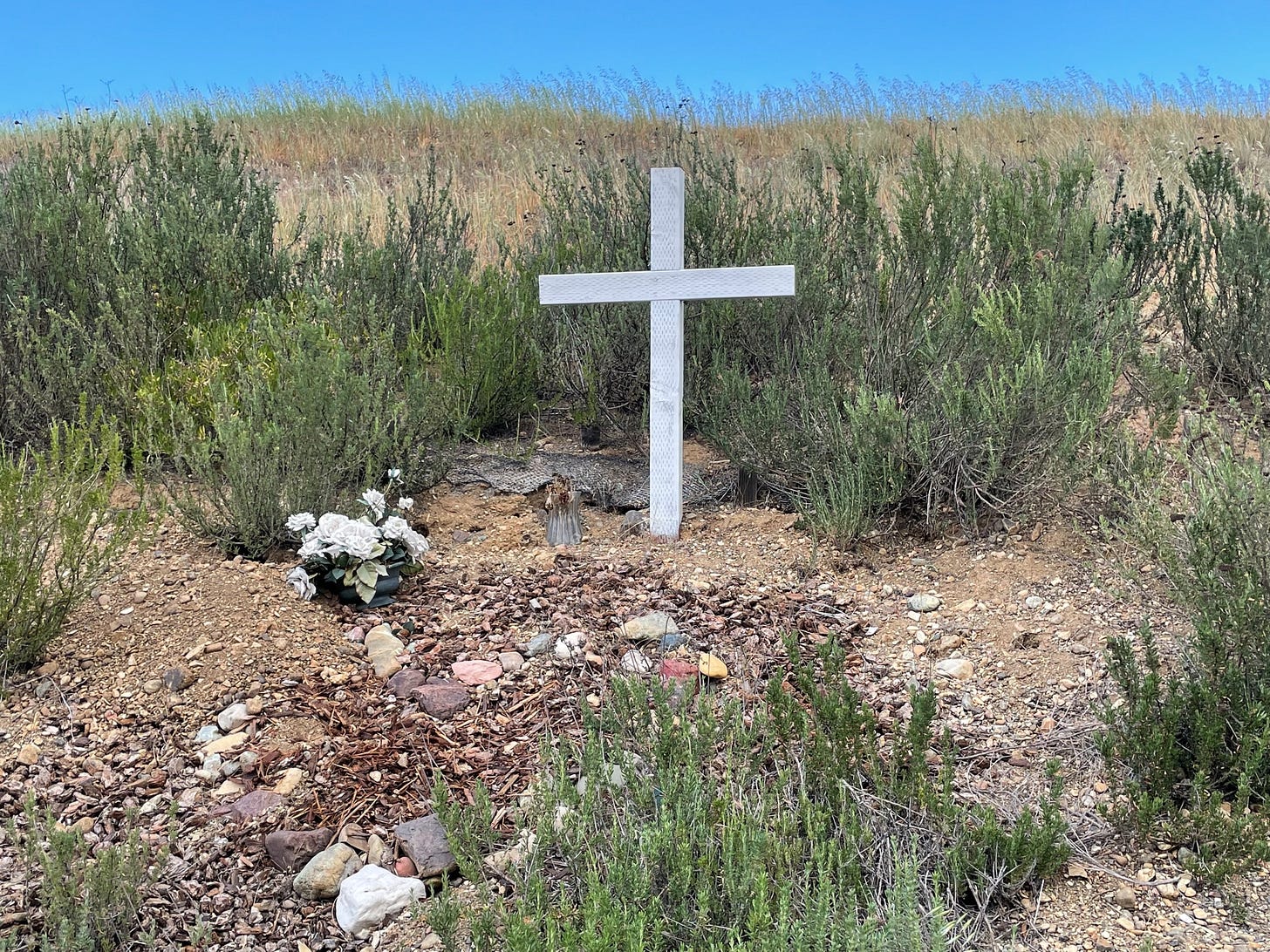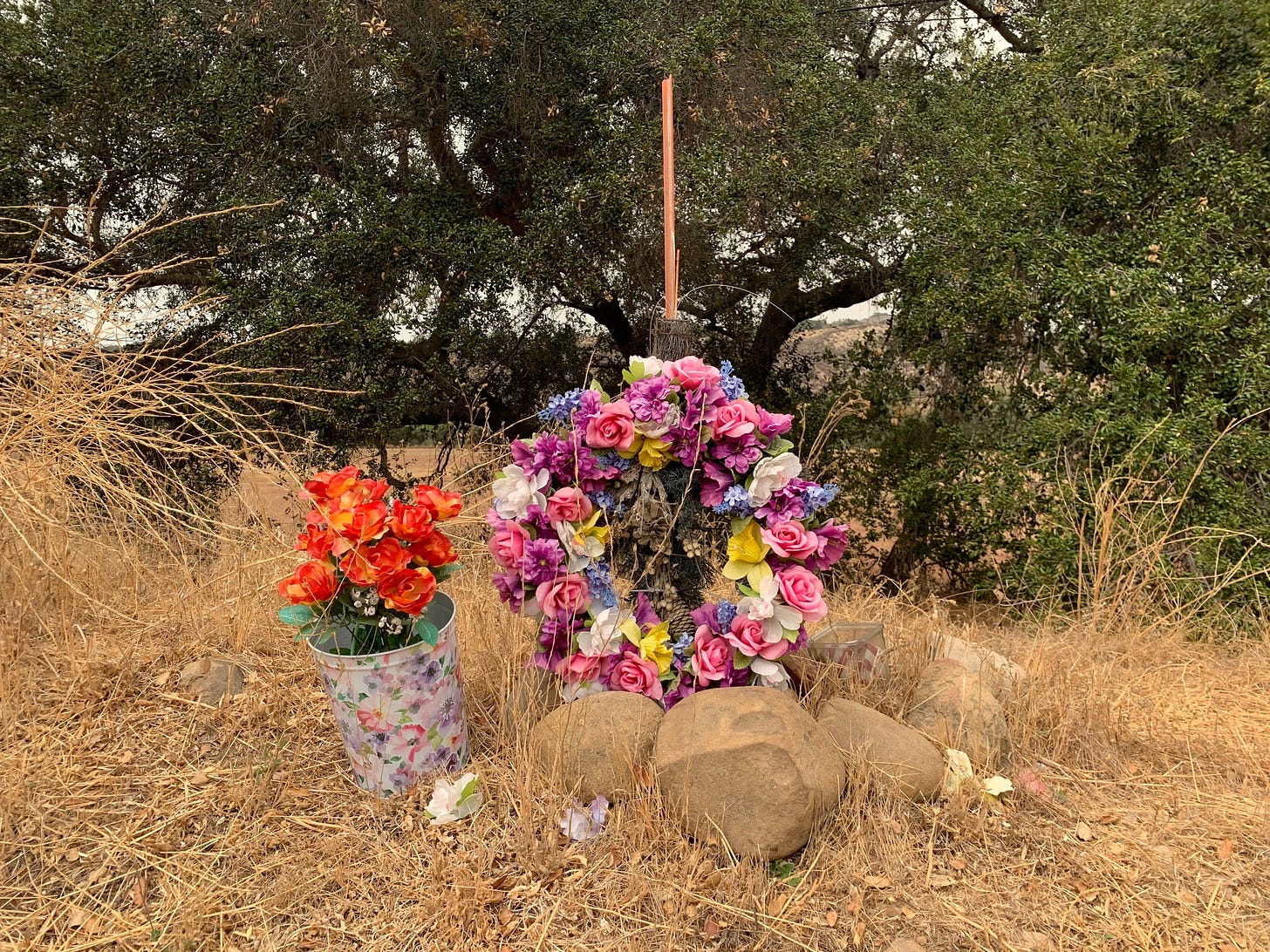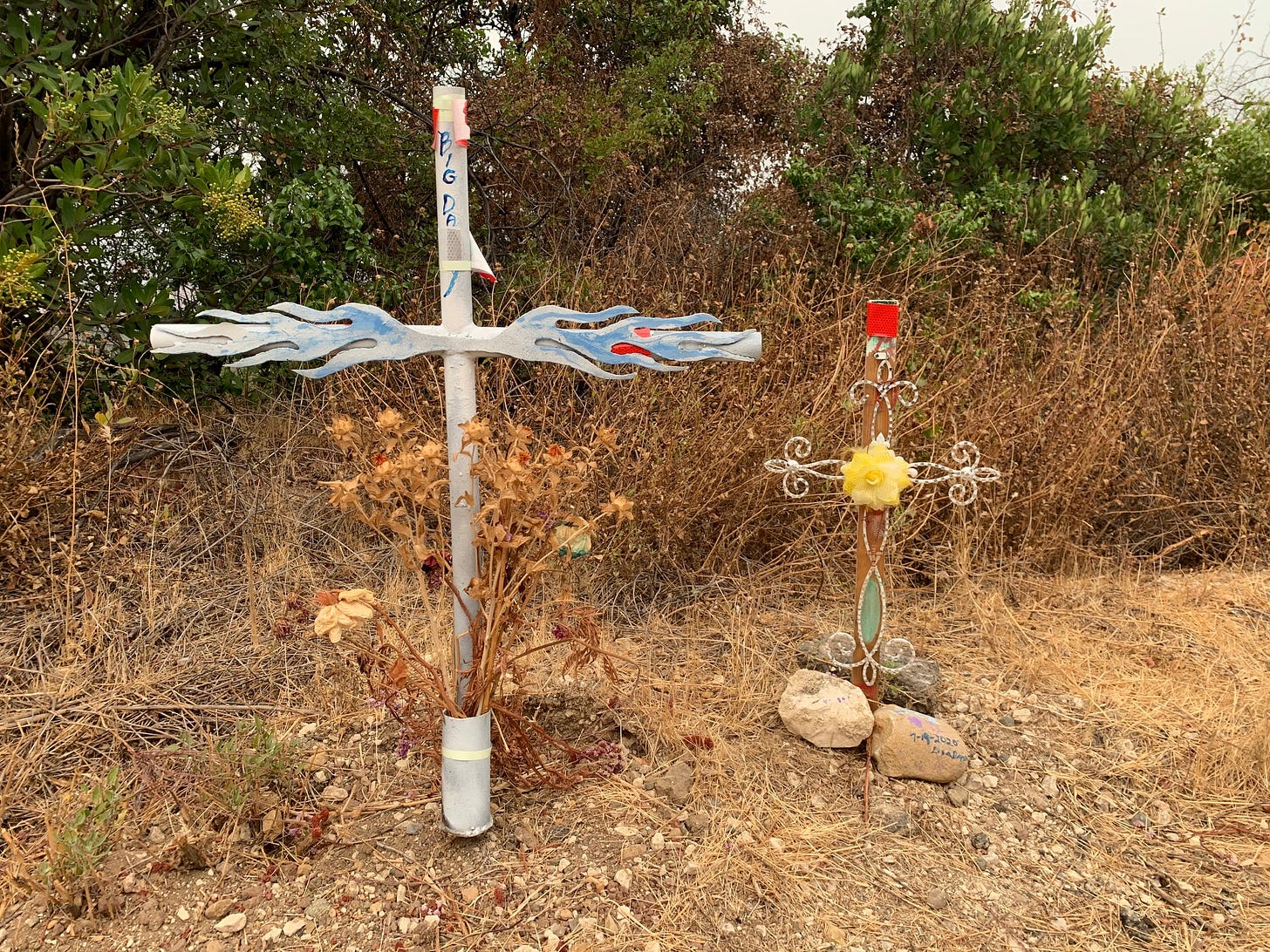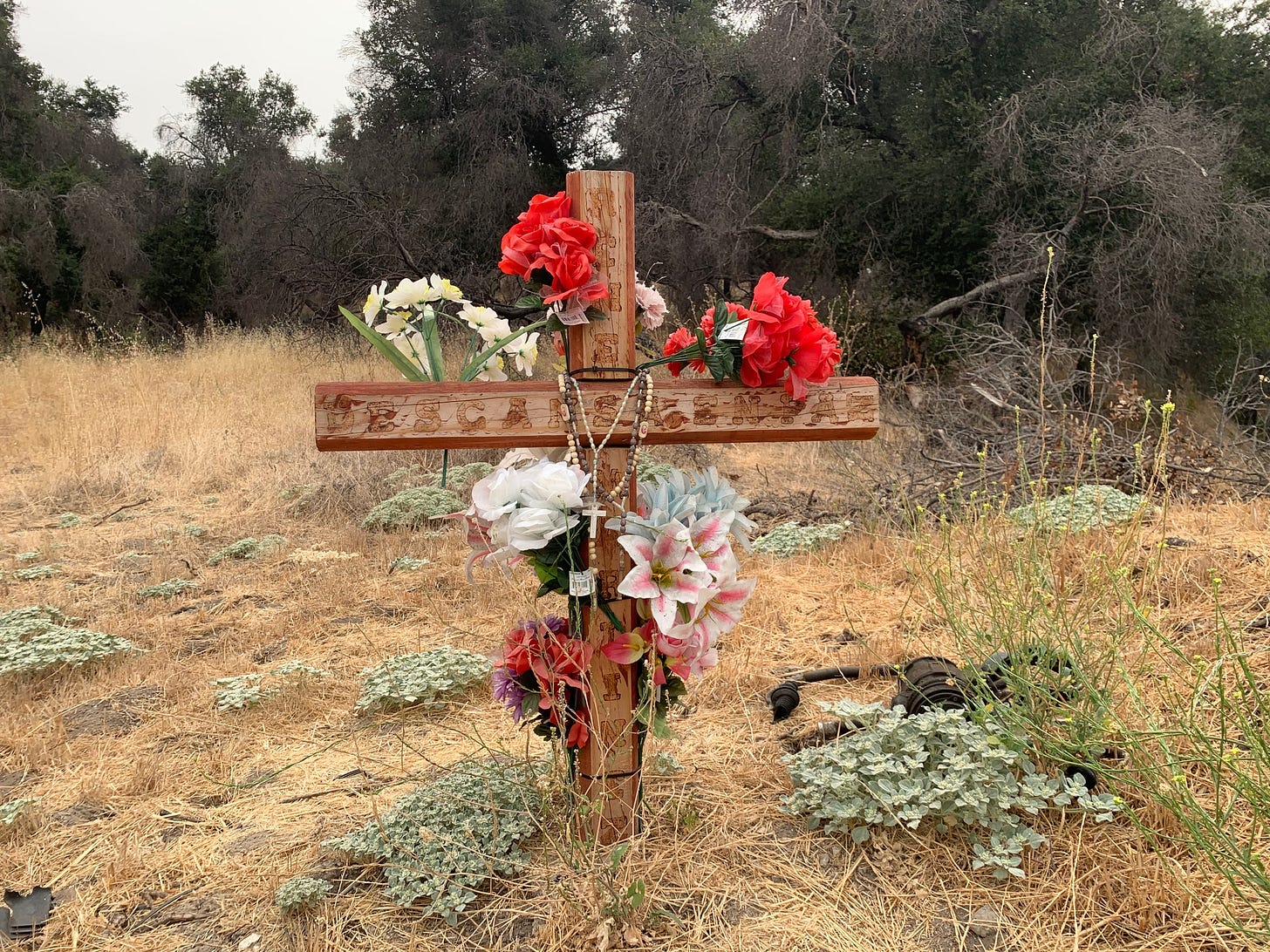If you missed either of the first two segments of this piece, head over here!
Well, we’ve covered the top of the pass, the end of the pass, and the bridge of the pass. Here’s where we run the full stretch gamut of the pass.
About half way through Highway 154 lies the only true lake in Santa Barbara county, unless you’re a local that counts Zaca Lake as legit. I’m a local and I don’t, having enjoyed Zaca’s shores all throughout high school, a favorite place to ‘shroom, in fact., The truth is, Zaca is more of a glorified pond, in my perhaps biased opinion…lots of algae (gross), endless rumors about its deep bottom having never been found (false), and plenty of campfire ghost stories about drowned kids (coin flip). Yet Cachuma Lake (from the Barbareño Chumash word aqitsu'm, which means "sign”) is Santa Barbara County’s sole significant body of water aside from the Pacific Ocean, save for when a rare rainy season falls and the nearby Santa Ynez River, fed by the lake itself, fills its usually drought-stricken bed. Spanish colonists, in their standard fashion, tweaked the proper moniker of the Chumash village Aquitsumu to Cachuma.
That lake has often been a point of contention for many a born n’ bred like myself having grown up in north county, because it’s a reservoir for the local water supply. Swimming is not permitted. Not being able to swim in the nearest body of fresh water kinda sucked. Still does, actually. Its recreation area has two swimming pools for visitors to use, it’s a fair famous fishing lake hosting many an angler derby with a healthy stock of bass, trout, catfish, crappie, bluegills, and sunfish. Lots of folks camp there, reservations are six months out by and large, but I always thought it was a cockblock, camping at a lake where you can’t swim, ya know?
Despite its ever tempting, off-limits waters, Cachuma Lake was a staple of my youth nonetheless, what with Cub Scout outings learning how to boat and fish proper, then in my teenage years because of its lakeside snack bar and grill and vintage arcade at the pool area. If you’re lucky, you might catch a glimpse of a bald eagle from a hidden aerie thereabouts. When the lake dries up to drought levels, and it does frequently, motorists on the 154 can see drowned leavings of Old Highway 101, a few small bridge ways, the faint trail of the ancient pavement. Cachuma has a dam where all the lake’s catfish spawn in its bottom depths, and there’s a local resident mobile home village nearby. The area is a kissing cousin to its nearby neighborhood of Paradise farther up the pass, a smattering of off-grid homesteaders and hippies and ne’er do wells who rent cabins on federal lands. I had a childhood buddy whose dad owned a Cessna and he used to take us up and dive-bomb the lake to scare the shit outta me, much to my buddy’s delight. It worked. I hate flying. It’s too confined and I don’t much care for putting my life in other human hands. Yes, I know, the roads offer much more probability of reaching the end of my mortal path on earth than traveling in a plane.
Cachuma Lake boasts yet another of 154’s many majestic vistas, nestled in the Santa Ynez mountains and the Los Padres Forest. The pass snakes its way alongside its westernmost shore, with a good number of ‘S’ curves and gradual switchbacks. But the 154 also has a handful of straightaways that tempt even mild daredevils to pedal-metal it. As such, you might rightly conclude its central stretch starting from the southwest end of the Santa Ynez Valley at the roundabout junction of Highway 246 all the way to the Cold Springs Arch, is indeed where most descansos tend to lie along the 154.
The above header photo is a distressing one, I realize. That event happened not too long ago, in 2019, where a mentally unstable man attempted to commit vehicular suicide by veering into the oncoming lane. His poor choice ended up killing a woman named Vanessa Blay, along with her two young children. He survived and is now serving a life sentence. It was as awful as you imagine…she was just driving along, taking her kids somewhere, and blammo, some dude looking for a quick end decides to take some folks with him. Why he didn’t just scale the suicide fences at the bridge and do it solo, is a question only he can answer. He’s got a lot of time to consider it.
Below is a marker I came upon just recently when I was scouting the Cold Springs Bridge for the first segment in this series. It lay beside Stagecoach Road, the winding mountain avenue that leads from the 154 to Cold Springs Tavern. The decedent, one Rodney Buckner, appeared to be a utility lines worker of some kind, as evidenced by the placard affixed to his cross, and whether he had an accident while he was working on the very same lines in the skies behind his descanso or not, I have no idea.
The following quartet of descansos were simple constructs, posted at random intervals, relatively unadorned and lacking epitaphs or epithets.
The descanso below commemorated one ‘Big Daddy,’ whomever he might be in the sea of countless Big Daddies across the planet. There’s also a second cross nearby, with a rock emblazoned with washed out name that might be a Lisa-something, but I couldn’t quite read it legibly.
This next one below, a thick and solid construction, was erected adjacent to the 154 on a side road. That same road took me and my sixth grade class, loaded up on a long, yellow school bus, to our rite-of-passage science camp. That camp, for my particular grade school, was often the first time any of us had ever spent several days and nights away from our parents. There were some tears spilled in the communal cabin that first night from some of my brethren. Not me. Honest. (ahem). I’m not going to reveal why going to science camp was considered a rite of passage, but let’s just say for us boys, it involved a crude, preadolescent tradition of young, dumb lust. I did not achieve the somewhat tainted glory therein during my stay, but two of my cabin brethren did, and they were hailed as conquering heroes. I digress, though in all fairness I did mention Highway 154 has a considerable breadth of memory in your author for a wide array of happenings. We need not only speak of life and death phenomenology here. Many philosopher types claim phenomenology incorporates pretty much anything and everything, the nature of being and all those horse apples.
Anyhoo, the descanso here honors one Rene Martinez, with a cross beam epitaph with the phrase descansa en paz: ‘rest in peace.’
I probably should’ve passed on photographing this next one, because it was located on a thin shoulder and I may have been risking my foolish life for a less foolish task. It commemorates a woman named Diane Tossier, who apparently was a member of a motorcyclist recovery group called The Mended Sisters.
Below lies the memorial for ‘Danny,’ a 22-year-old-father at the time of his passing, whose descanso holds a most interesting distinction in the context of our column hereabouts. I believe it may be the oldest memorial construct currently standing on the pass. Furthermore, it may be the oldest descanso still upright across the entire Southern California region, though it’s impossible to determine that for certain. Perhaps a few of the decayed crosses located under the Cold Spring Bridge, as mentioned in Part One of this segment, might rival or surpass the age of Danny’s shrine, there’s no way to tell for sure because those older bridge descansos’ epitaphs were all weathered beyond legibility.
Danny’s descanso is still located directly across from the off ramp to the entry road for Cachuma Lake’s campgrounds. It’s been tended to and repaired many times over, because as you can see, Danny passed away in 1998. That means I’ve been driving by his descanso site for near 26 years, give or take. I cannot think of another marker I’ve come upon that’s stood this long. It’s clearly been given a perpetual hall pass in terms of Cal Trans clearing. I had an earlier photo of Danny’s site taken years ago, but just this week I passed by again as I frequently do and there was a wondrous rainbow falling upon and around Cachuma Lake. It felt fairly apropos to re-shoot Danny’s memoriam accordingly, for obvious reasons. A fitting tribute from the heavens.
See, Danny? We’re still thinkin’ of ya.
This last one may hold the distinction of being among the saddest, if not the saddest, descanso I have seen to date.
I think its stark simplicity was the cadence that rang my mourning bell as loudly as it did. Rather than a standard wooden slat cross, it was assembled with a pair of tree boughs, which somehow made it equal parts archaic, rustic, and ominous, not far enough from resembling a Blair Witch style of ‘twana’ stick charm. It was haphazardly tied off with a segment of nylon rope. It was new when I pulled over to honor its decedent, with fresh gerber daisies at its base. The stuffed animal hadn’t yet been soiled by the elements. It is, naturally, the teddy bear which definitively identifies the tragedy at hand, another child who met their all-too-early demise. More than that, beyond a photographer’s eye, it’s the way the bear is positioned on the cross, kind of drooping, kind of hanging, with its ‘hands’ held together in front.
Looking at it now, I remember exactly what it invoked in me.
A long, despairing sigh.
Can you feel it?
I bet you can.
In person, standing a few feet away, it was worse. I could go on another redundant rant about corporeality, and how we humans ought to have found foolproof and ecologically sustainable methods of getting around this planet by now, but loyalist Road readers already know I’ve done that plenty.
It’s always the kiddo descansos that ache the worst, as I intoned in an earlier segment. If you’ve ramped up your empathy vibes as I’ve often encouraged, take care around these types of memoriams, because they leave tiny little scars on your heart, where by briefly sharing a spiritual space with the humans who chose to commemorate their loved one roadside, you flow in the oneness of all. But they do leave a mark.
Such is the nature of finite existence.
Some of us go early. Some go way, way too early. Some of us go later. Leaving before we hit our teens seems an existential crime, and it always is, to those forevermore broken parents left behind.




